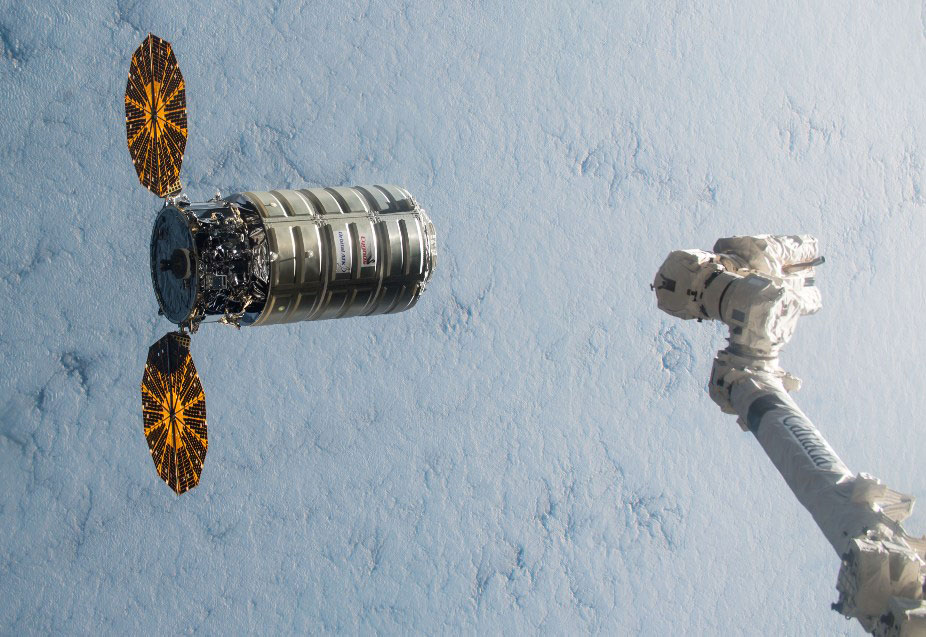
Recently I’ve seen a number of fun articles on space exploration. Here are a few to share: successful resupply launch to ISS after several failures across the industry, competition between spaceplane and reusable boosters, and China developing a new manned capsule.
12/6 – ABC News – Liftoff: 1st US Shipment in Months Flying to Space Station – Orbital ATK’s cargo ship launched on top of a ULA Atlas 5 rocket. Cygnus is carrying 7,400 pounds of supplies to the ISS.
Orbital lost a supply run in October 2014, Russia lost one earlier in 2015, and SpaceX lost one in June 2015. Keep in mind that launching rockets into space is the difficult task that is behind the putdown of ‘it isn’t rocket science’.
12/8 – NASAspaceflight.com – Berthing Complete: OA-4 Cygnus arrives at the ISS – the Cygnus cargo ship has been docked at the ISS. Article gives good explanation of the complexity of getting a supply ship to exactly match the orbit of the ISS and the very careful process of trying to close and then grab for docking.
12/9 – Behind The Black – Cygnus berthed at ISS – Comment points out this is a big deal for Orbital and ULA since it shows the Cygnus capsule can be launched on ULA’s Atlas 5 rocket as well as an Antares rocket.
12/16 – Space.com – Space planes versus Reusable Rockets – Which Will Win? – Tremendous learning point for me from the article is that fuel makes up 1/1000th of the cost of a space shot. That would be 1/10 of 1%. Most of the cost is the launch vehicle, which is used once.
Having a launch vehicle that could be reused would radically reduce launch prices.
Conceptual competition today is between a spaceplane or traditional rockets which could be reused. Article has a fantastic graph showing cost per launch for the three major designs that are in competition with comparison to current launch options. Not sure I understand the graph very well, but here are a couple of my simplistic observations:
Lift cost for Falcon 9 is currently £3,000/kg for one-time use.
That would be US$4,470/2.2#, or $2,031 per pound. Costs $16,959 to get a gallon of water into orbit on a Falcon 9.
Falcon Heavy is expected to cost just over £1,000/kg for one-time use. That is quite an improvement.
All prices for the remainder of my post will be in thousands of pounds per kilogram.
With five reuses, a Falcon 9 would cost between about 1200 and 750. A Falcon Heavy costs will likely be just over 1000 for one-time use which would drop to between 500 and 300 with 5 reuses.
In sharp contrast, the Skylon spaceplane is off the charts until there are several dozen reuses. At 50 reuses the price would be between 2000 and 3000. At 100 reuses the spaceplane cost would drop to a range of around 1400 to 2300. For an entertaining contrast, the number of worldwide launches last year was under 100.
For an even more entertaining contrast, the ESA is still working on a one-time usable Ariane 6, expected to be available in 2022, which will have a cost of just under 6,000.
As Behind the Black often says, the competition heats up:
12/15 – SinoDefense – China develops next-generation crew vehicle – China is working on a new manned crew capsule. It will carry between two and six passengers, depending on mission. Will be designed for multiple missions ranging from low earth orbit to asteroid exploration to Mars missions. China is also working on its own manned space station, expected to be deployed in about 2020.
Article gives lots of background on the capsule.
Another major player in space exploration. Very, very cool.
12/15 – Behind the Black – New China manned vehicle under development – This article pointed me to the preceding discussion of China’s new manned capsule.
The technology is way beyond me other than understanding it is very cool. Final comment in the article indicates Mr. Zimmerman isn’t as impressed as me:
In other words, rather than copy and upgrade the design of the Russian Soyuz, as they did with their Shenzhou capsule, they will copy and upgrade the American Apollo capsule.
The conceptual designs do look a lot like the Apollo.
I realize China is not even comparable to one of the private companies that is in the wide open frontier of private space exploration, but with multiple players in the market, another player just increases the competition. I think that is still very cool.